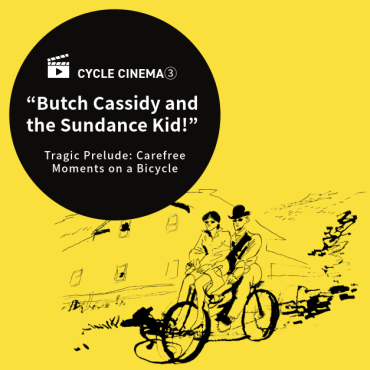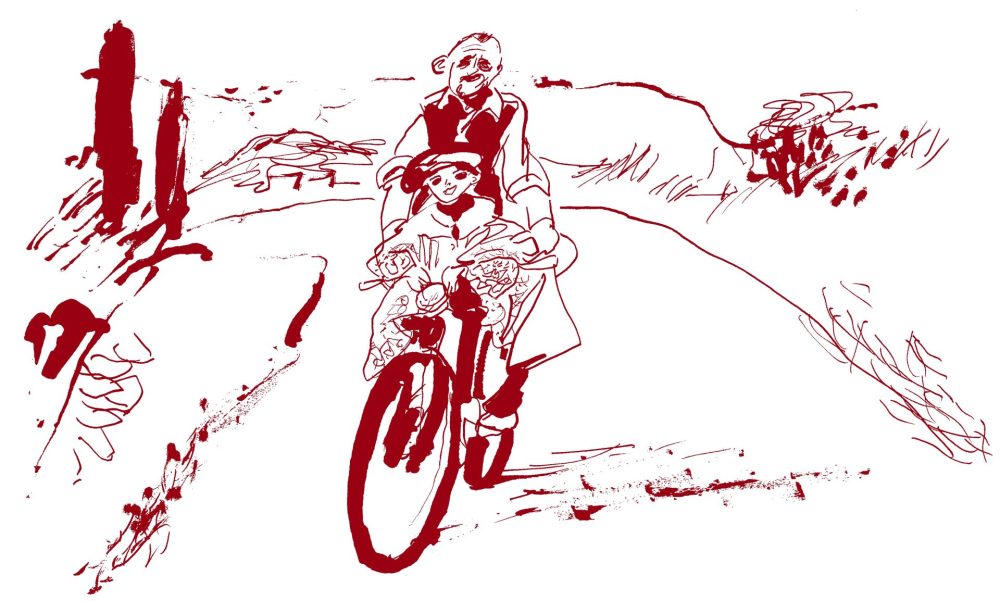
“Shoot for tomorrow!”(origin title “Butch Cassidy and the Sundance Kid”)
Tragic Prelude: Carefree Moments on a Bicycle

Despite being an Italian film from about 30 years ago, a collaboration with France, ‘Cinema Paradiso’ (1988, directed by Giuseppe Tornatore) remains a highly popular and influential movie, telling the story of a projectionist and a young boy.
The setting is post-World War II Sicily, Italy. Films at the time were highly flammable, and projection rooms had strict fire safety rules; spontaneous combustion was a terrifying risk. Until the switch to non-flammable film, many lives and film reels were lost. Projectionists back then might have had a risky, almost outlaw-like job.
In Italy during that time, when the influence of the Catholic Church was strong, films deemed religiously inappropriate would be censored, sometimes even with scenes being cut out. Among them, kissing scenes were strictly prohibited. In screening rooms, discarded film pieces lay scattered. Post-war, even these patched-up, censored movies were enthusiastically embraced by those enduring impoverished lives. Toto, a smart and film-loving boy, idolized Alfredo, the projectionist. Perhaps to fill the void left by his father, missing in action, Toto would sneak into the projection room whenever possible. However, Alfredo would shoo him away, saying, ‘You’re not supposed to be here.
One day, Toto spends his errand money to watch a movie. Misdeeds of children are bound to be discovered by their parents. Toto faces his mother’s scolding in front of the cinema. Alfredo intervenes cleverly to save Toto, sparking a deepening bond between them. Seeing Alfredo passing by on his bike, Toto, reluctantly helping at the church, feigns illness, claiming, ‘I can’t walk anymore,’ in tears. Toto gets a ride on Alfredo’s bike, managing to skip work. The scenes of the two riding the bicycle together felt like a family moment. Toto, even as a child, sensed his father’s death in the war and might have sought a fatherly figure in Alfredo.
Up until this point, it’s been a heartwarming movie, but finally, tragedy strikes. A film fire accident occurs, causing Alfredo to lose his eyesight. Toto, who had been learning the job by watching and imitating, takes over Alfredo’s work and becomes a projectionist. However, Alfredo has something to say.
“This isn’t the job for you. Right now, movies and you might be getting along, but it won’t last. There’s something else waiting for you. A different significant job. I lost my eyesight, but I see better than before.” As a young man, Toto departs from his hometown and heads to Rome.
Upon receiving news from his hometown, Toto (no longer addressed by his childhood name) returns home after 30 years. Then, Alfredo’s wife hands him something. It’s a very famous scene in film history, so many of you might remember it.
In this movie, bicycles don’t have a significant presence. However, bicycles are used as a bridge in scenes where young Toto and elderly Alfredo form a friendship that transcends age. The poster for this film also features a scene of the two riding a bicycle. It’s a remarkably beautiful moment. I’d love for you to see the blissful moment of the two riding bicycles.

🎬CYCLE CINEMA STORAGE🎬
#01 “The Bicycle Thief”
#02 “Project A”
#03 “Shoot for tomorrow!”(origin title “Butch Cassidy and the Sundance Kid”)
#04 “The Kid With a Bike (Le gamin au vélo)”
#05 “Izakaya Choji”
#06 “Cinema Paradiso”
#07 “Kids Return”
#08 “PERFECT DAYS”
#09 “Kramer vs. Kramer”
#10 “E.T.”
#11 “Gachi-Boshi”
#12 “Yesterday”
#13 “Wadjda”
#14 “The Zone of Interest”
#15 “Anselm”
#16 “Otoko wa Turai yo”
Text_Hideki Inoue
I am from Amagasaki City, Hyogo Prefecture, Japan. I work as a writer and editor. My hobbies include hot baths, skiing, and fishing. Although I have no personal connection, I am independently conducting research on Shiga Prefecture. I prefer an active fishing style called “RUN & GUN,” which involves moving around actively instead of staying in one place. I am planning to purchase a car to transport my bicycle to adopt this style, which might seem a bit counterproductive.
Illusutration_Michiharu Saotome
Post Date:2023.12.22